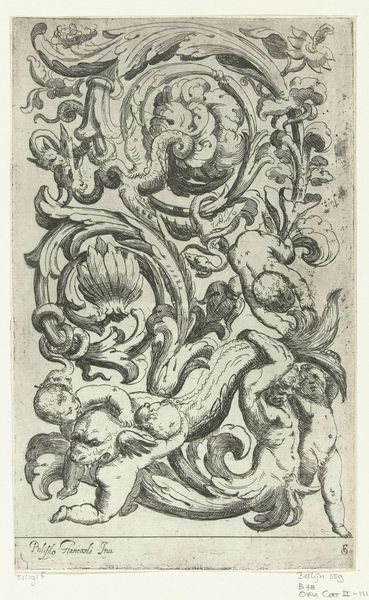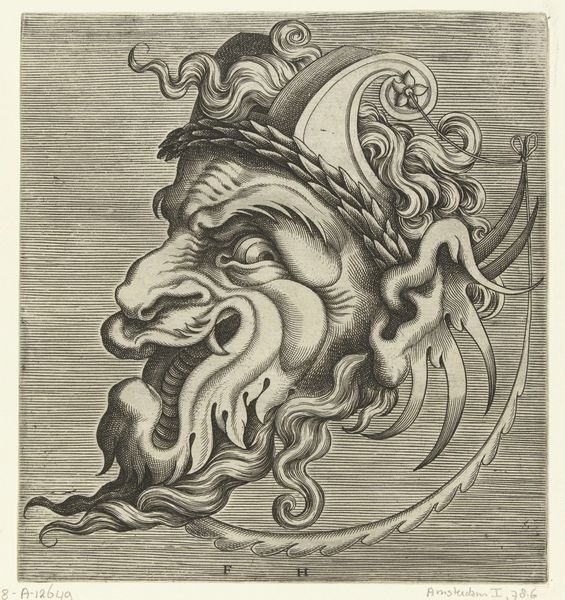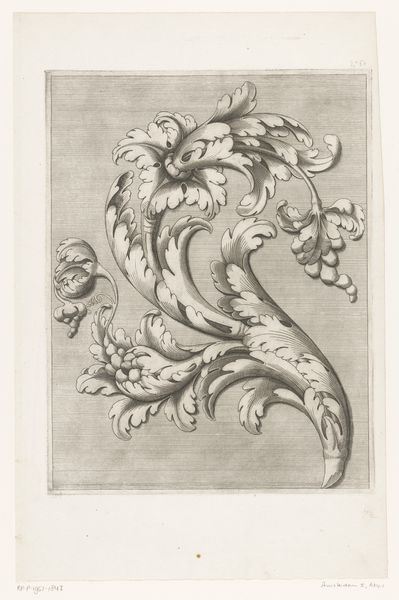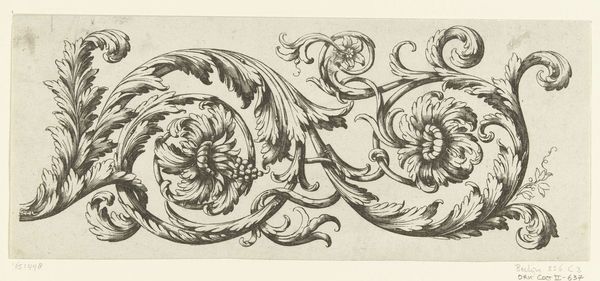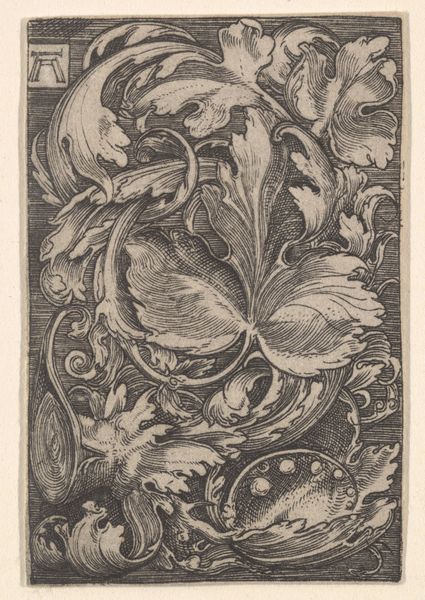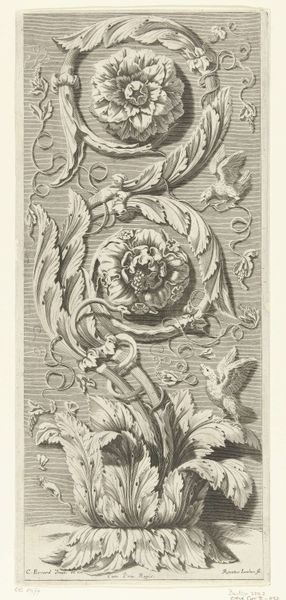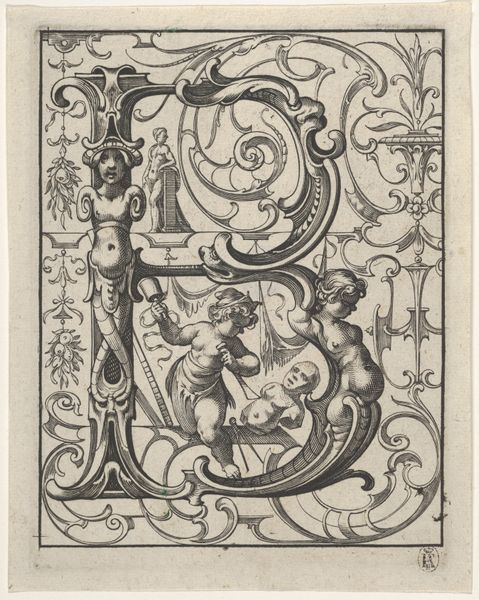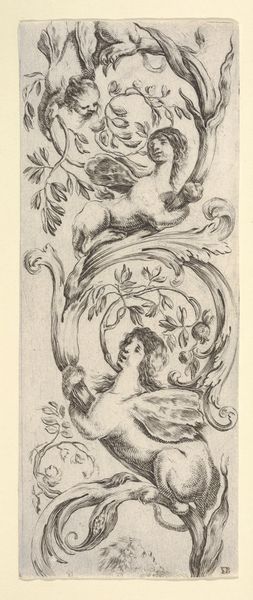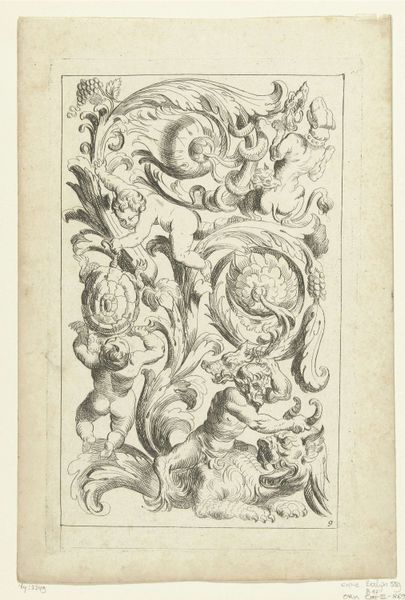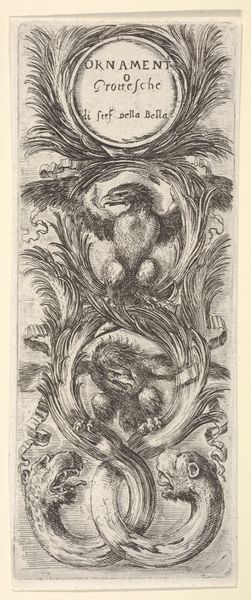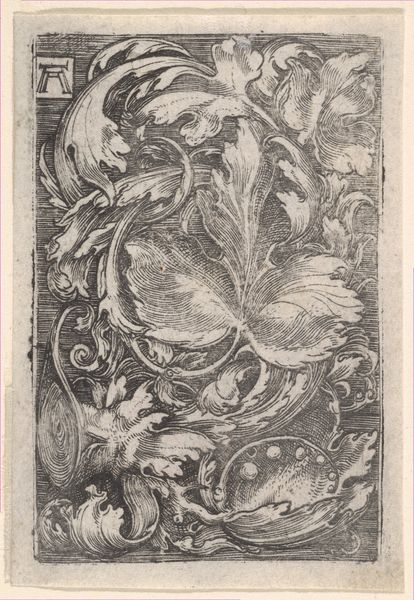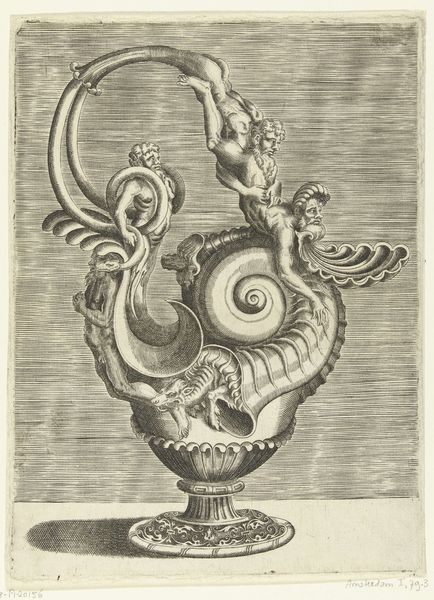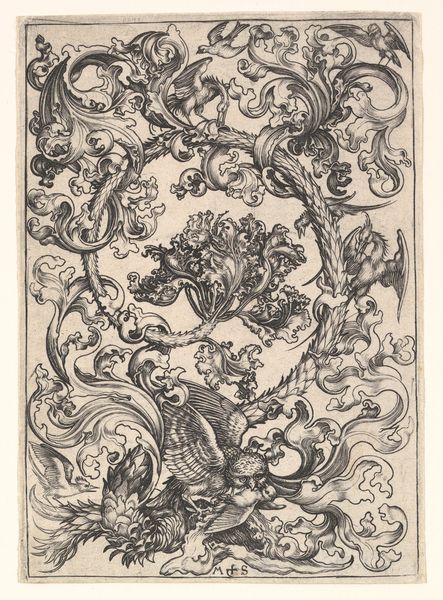
drawing, print, engraving
#
drawing
#
baroque
# print
#
bird
#
figuration
#
line
#
engraving
Dimensions: height 346 mm, width 250 mm
Copyright: Rijks Museum: Open Domain
Editor: This is “Acanthusmotief met slak en vogel,” or Acanthus Motif with Snail and Bird, a 1611 engraving by Cesare Domenichi at the Rijksmuseum. It’s a whirlwind of botanical forms! What I find interesting is how the bird and snail are placed amongst the foliage. What do you make of this dynamic between organic shapes and wildlife? Curator: I see in this work the persistent echo of classical antiquity, reborn through a baroque lens. The acanthus, a staple in ancient Greek and Roman ornament, here spirals with renewed energy, suggesting nature's inherent vitality, an important symbol in the collective unconscious of the time. But what of the bird and snail, mere decorations? Or could they be carrying more symbolic weight, especially given their prominent position? Editor: I hadn’t thought of the animals carrying symbolism beyond their obvious place in the natural world. I’m curious, what meanings could they possess? Curator: The bird, traditionally a symbol of freedom and the soul's journey, is juxtaposed with the snail, a creature bound to the earth, representing patience and perhaps even spiritual sloth. This contrast may reflect the human condition: the aspiration for higher ideals weighed against earthly limitations, reflecting the push-and-pull of life. Consider how this tension plays out in the context of the print’s original use, perhaps adorning a book or a wall – would that change your perception? Editor: That gives me a lot to consider about how the placement and contrast play into potential meanings! Thank you! Curator: It highlights how art serves as a mirror, reflecting not only what is seen but also what is collectively felt and believed. It enriches the image's capacity to resonate across time.
Comments
No comments
Be the first to comment and join the conversation on the ultimate creative platform.
